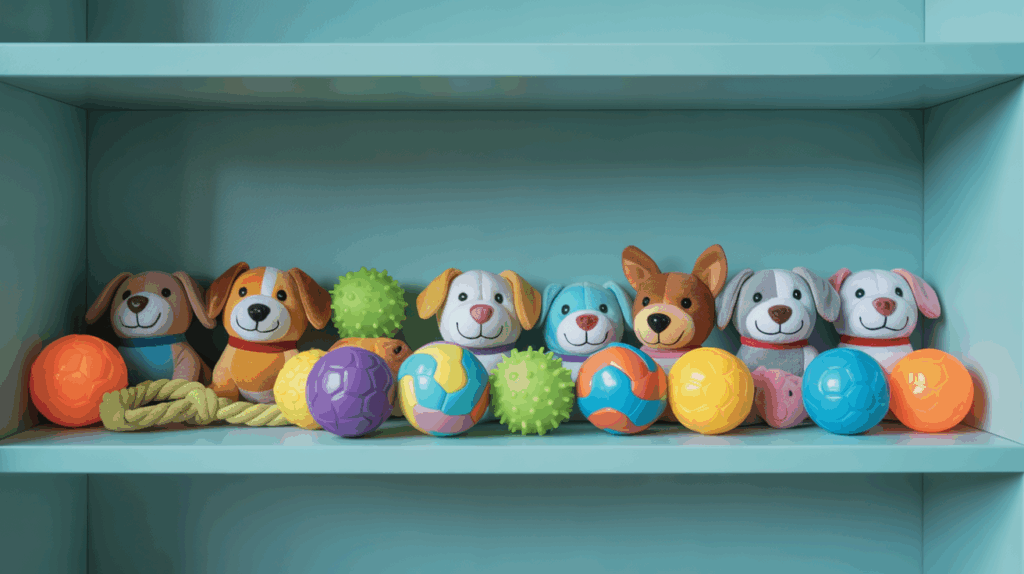Best Items to Donate to Animal Shelters (2025): Expert Tips on Daily Care Essentials, Comfort Supplies, and Common Mistakes to Avoid
An animal lover such as yourself would likely have been to an animal shelter before. Wagging tails, hopeful eyes. These are easy for your eyes to catch. But what’s not that obvious is the constant demand for supplies that keep everything (literally everything) running.
Now, you’re probably here wondering about the best items to donate to animal shelters. And you might be surprised to see that the answer goes far beyond pet food.
Of course, don’t get us wrong. Those unopened kibble and canned goods you bring are always appreciated. But shelters also need a lot of safe cleaning products to help prevent disease outbreaks. On top of that, they’ll need durable toys to ease the animals’ stress and blankets or beds to help them feel secure.
Maybe you might have been one of those well-meaning donors who would drop off an old pillow or a toy that could potentially cause issues like choking. Know that these are not usually usable, and the shelter will have to discard them.
But if you’re set on helping, shelter coordinators say that practical items like disinfectants, quality leashes, and even financial contributions can help them out big time. And these can cut down their operational costs by thousands per year.
Here in this article, you’ll get to learn what helps and what doesn’t. Knowing this will make your donation a truly life-changing one for these animals in need.
Best Items to Donate to Animal Shelters: Why Donating Matters

As most of us know, animal shelters are havens for abandoned, lost, and mistreated animals. They give these creatures a second chance at life, helping them recover and even finding new homes. Yet, we almost always underestimate the support they need to keep things running every single day.
If you’ve thought about what to donate to animal shelters, know that you’re already one of the few willing helpers. Your generosity is often the sustaining fuel to their shoestring budgets. And that means every single helpful item you donate counts.
Now, you should know that running a shelter costs a lot. Each month, shelters spend thousands of dollars just on basic operations. These range from veterinary bills to cleaning supplies, essentially all the necessary expenses just to keep the animals safe and healthy.
Experts in animal welfare say that donations of everyday necessities can offset these costs significantly. And that means the staff can direct their funding to lifesaving medical care and adoption programs, in turn saving more animals. Without community support, many shelters would struggle to keep the creatures safe, healthy, and adoptable.
Also, donating to shelters can ultimately benefit and strengthen our communities. If these animals can find new homes, there’ll be fewer strays on the street, and this can mean lower public health risks (less disease transmission). Emotionally, it also warms the volunteers and staff, knowing that they are supported. It’s just healthier for the environment and people.
But note that food, while necessary, is not the only thing shelters need. Kibbles and canned goods are always welcome. But reality also demands other practicalities. So, let’s take a look at some of the best items to donate to animal shelters next, shall we?
A Day in the Life: The Hidden Journey of Shelter Operations
Understanding how shelters operate shows why your donations matter so much. On average, a shelter processes about 19 animals every day, with monthly costs running between $140,000 and $280,000 depending on size and capacity. Even a simple donated towel takes a complex journey once it enters a shelter.
A Day in the Life of a Donated Towel
- The towel first goes to the sorting room, where staff check and log it before use.
- It’s washed with enzymatic cleaners, which cost much more than normal detergent but are necessary to remove waste and odors that can stress animals.
- Once cleaned, the towel may dry a freshly bathed dog or line the kennel of a cat recovering from surgery.
- Within hours it’s soiled again and re-enters the “contaminated laundry cycle”-washed hot with bleach and detergent to stop disease spread.
- This can happen 3–5 times a week, with each wash using about 10–15 gallons of water per towel.
The Hidden Cost: The Sorting Tax
Every donation takes staff time to process. Items must be sorted, inspected for safety, and sometimes thrown away if unsafe or unusable. For example, Montgomery County Animal Care and Control, which handled over 5,000 animals in 2024, found that unusable donations can cost up to 30 minutes of staff time per bag. That’s time pulled away from animal care. Poor-quality donations don’t just fail to help-they actually cost shelters money and resources.
What Are the Best Things to Donate to Animal Shelters for Daily Care?

Now, food is only one piece of the puzzle. The best items to donate to animal shelters are often the everyday essentials. These can really help keep operations running smoothly, and of course, they keep the animals comfortable. It’s like supporting a huge, busy household.
Let’s look at the significance of pet food first. Both dry and canned ones are usually some of the most requested supplies. Shelters usually house dozens of animals at once, sometimes even hundreds. So, the cost of feed can add up very quickly.
That said, most people usually donate whatever is cheapest to the shelter. That’s understandable. But know that sudden diet changes can upset the animals’ stomachs. If you’d like to take a step further, experts recommend calling ahead to ask what brands or types of food the shelter uses most. This can make sure your contribution is both usable and beneficial.
Beyond food, however, shelters also need cleaning supplies. They’ll need to go through mountains of disinfectants, paper towels, and trash bags. These are all necessary to keep the animals’ kennels safe and sanitary. They are also important to help prevent the spread of disease. Hygiene equals lower health risks, basically.
Essentially, if you want to make sure your donations make a huge impact, think of consumables. Laundry detergent, disposable gloves, hand sanitizers, mops, and even light bulbs. These are all items that shelters burn through daily and, more often than not, quickly.
You can also throw in towels and blankets. These are also all among the best things to donate to an animal shelter. They are less for the shelter but more for the animals. We shall look at their significance in the next section.
Enrichment and Comfort: Good Things to Donate to an Animal Shelter

Now, food and cleaning supplies may keep shelters running. But it’s comfort and enrichment items that make those kennels into something homey. Animals waiting to be adopted can feel anxious and bored most of the time. So, some of the best items to donate to animal shelters involve addressing their emotional needs.
Toys are possibly some of the most impactful enrichment donations. Chew toys for dogs and scratching posts for cats are entertaining for the animals, and they can prevent destructive behaviors that come with boredom and stress.
That said, shelter workers do say that fragile and unsafe toys are not suitable for these animals. Imagine the creatures chewing on thin plastic, ribbons, or stuffing. They can pose choking hazards. So, no cheap plastic jingle balls that crack easily or plush squeaky toys that can spill stuffing.
Instead, try donating some durable, washable items. For example, for dogs, you try Kong toys, Nylabones, rope tugs, durable rubber balls, and puzzle feeders. For cats, think Sisal scratching posts, sturdy feather wands, jingle balls with enclosed bells, and cardboard scratching pads. You can check with the shelter if they house any other animals before you donate.
Next, comfort items can directly affect an animal’s stress level. The shelter can be noisy and unfamiliar to them. So, soft bedding, blankets, and towels can help create a sense of safety.
And with that emotional comfort comes less stress. Better rest and calmer behaviors will also follow then. Just make sure that you remove the zippers, buttons, or loose threads before you donate them.
If you’re feeling DIY, however, you can try using cardboard boxes for cats and braided fabric ropes made from old T-shirts or towels for dogs. You can also try stuffing paper towel tubes with kibble. Or you could put frozen treats in a plastic-free mold to turn it into a puzzle toy. These are low-cost, yet they’ll still help the shelter animals feel secure and stimulated.
What Items to Donate to Animal Shelters: What Cannot Be Accepted
Yes, you’ll need to consider: What do animal shelters take for donations? It’s not “anything helps;” it’s more “anything that helps.” Know the difference. Animal shelters will need to make sure that your donations are safe for use, meaning they’ll not accept those that prove otherwise.
Let’s start with what shelters can accept. As long as the pet food you donate is not opened, toys are durable, and blankets are free of zippers or buttons, they are more than welcome in the shelter. Safe, general cleaning supplies and grooming tools are in the clear, too. They are more for the staff to handle.
Some other items, however, can create more problems than solving them. Shelters naturally cannot accept opened food bags, prescription medications, or heavily worn bedding. They pose direct health and safety concerns.
Now, you might think that those old pillows or mattresses of yours are good enough. But these used items are really difficult to sanitize. They’ve also probably collected a lot of dust and pests. And if the stuffing escapes, there might be choking hazards to worry about.
Other items that are usually unacceptable include expired pet food (for obvious reasons), homemade treats without ingredient labels, and heavily scented cleaning products. The last of which can irritate the animals’ sensitive noses.
There are also shelters that reject electric heating pads, seeing that the cords and plugs might lead to electrocution. Large crates or carriers that are in poor condition might break under stress. And certain bedding, like sheepskin rugs or thick comforters, can trap the animals’ claws.
The same goes for toys. No thin plastic toys or rawhide chews. You also shouldn’t donate any items with detachable parts. If in doubt, you can always call your local shelter. Talk to them and ask for their specific needs.
Expert Voices: What Shelters Really Need
We spoke with shelter directors, vets, and managers to learn which donations truly help-and which common mistakes end up wasting resources.
The Power of Enzymatic Cleaners
“The most useful donation after money is high-quality enzymatic cleaner,” says Linda Martinez, Operations Director at a city shelter. “It’s the only product that removes waste odors for good. Normal cleaners just cover smells, but enzymatic ones break them down at the source.”
These cleaners use good bacteria that keep working long after use, breaking down proteins, fats, and waste. They are more expensive-about 3–4 times the cost of regular cleaners-but they are a must-have for keeping kennels safe and healthy.
Food Donations: Quality Matters
Dr. Sarah Chen, a vet with 15 years of shelter experience, explains:
“We often have to throw away opened or expired food. It’s unsafe for animals and creates liability risks. Only sealed, in-date food from trusted brands can be used. Also, sudden diet changes upset stressed animals, so consistency in food brands is more important than people think.”
Infrastructure That Changes Lives
According to Michael Rodriguez, Facilities Manager at a busy government shelter:
“Most people don’t realize outdoor spaces matter as much as kennels. Play yards with shade, drainage, and toys reduce stress and help dogs stay adoptable. A $2,000 upgrade outside often has more impact than spending the same money inside.”
Planning for Kitten Season
Stephanie Filer, Executive Director of Shelter Animals Count, highlights a seasonal challenge:
“During summer, shelters see three times more cats than in winter. In May and June alone, about 1.6 million of the 3.3 million cats entering shelters are under 5 months old. That means nearly half are fragile kittens who need the most care.”
Beyond Best Items to Donate to Animal Shelters: Other Ways to Support
Indeed, food, blankets, and cleaning products are some of the best items to donate to animal shelters. But if you’re not sure what to put into that basket and still want to help, don’t fret. There are plenty of ways to help make a difference.
One of the most effective ways to make an impact is volunteering. You can probably tell that shelters are usually understaffed. So, your extra hands can really help lighten their load from walking dogs to socializing shy cats. Shelter coordinators say that consistent volunteer hours can save them thousands of dollars in staffing costs every year.
Now, it’s completely fine to do weekend shifts. But know that weekday ones are probably the hardest to fill. So, if you’re available to help out on those Mondays or Thursdays of yours, the shelter will greatly value your service.
The next thing you can do is to foster a pet. This means you’ll have to open your home temporarily to an animal. This can reduce shelter overcrowding. And if done right, you could even give the pet a calmer environment to heal or prepare for actual adoption.
Experts say that foster care can really benefit animals that are recovering from surgery, nursing litters, or those that are too anxious for busy kennels. That said, know that one of the “risks” is you getting too attached and ending up adopting the pet-the so-called “foster fail.” This is not a bad thing. Just that the shelter might lose a good foster parent.
And last but not least, financial contributions can always help in some ways. Shelters can easily use the money to cover emergency medical bills, spay-and-neuter programs, and facility upgrades. If the donations are recurring, shelters can even budget themselves more effectively.
How to Maximize the Impact of Your Donations
Your donation is appreciated, and it definitely shows your generosity. But if you’re wondering about how to make your contributions as effective as possible, there are several strategies that can help you with that.
Before donating anything, it’s best that you communicate directly with your local shelter. Different seasons will prioritize different supplies. Population size and emergencies also come into play.
For instance, during kitten season, cat food and formula are naturally in high demand. Winter months, on the other hand, may call for extra blankets and heating supplies. So, if you happen to bring something that is not as helpful at the wrong time, shelters might face storage challenges.
The next thing is to focus on quality over quantity. The items you donate should be durable and pet-safe, reducing replacement costs. Veterinary staff say that sturdy toys, strong leashes, and hypoallergenic cleaning supplies work very well compared to cheap alternatives.
The same applies to food. We understand that you’re thinking about feeding a huge number of pets with those bags of food. But tolerance is a factor we need to think about. Also, the nutritious profiles of generic kibble often cannot match up to high-quality, brand-consistent ones.
You definitely don’t need to do this alone. Combine your efforts with your friends, coworkers, or even community groups. Supplies, even high-quality ones, are usually much cheaper when you purchase them in bulk. Some shelters also partner with local stores that offer discounts for donation drives. So, that can really help lighten that well-intentioned wallet of yours.
Supporting Shelters and Keeping Cats in Their Homes
For many animal shelters, the challenge of daily care goes beyond food and bedding. One of the most common issues both shelters and families face with their cats is house soiling. That means your cat is refusing to use the litter box.
This behavior is stressful for owners and is the main reason cats are surrendered to shelters, adding stress to the existing load. And you should know that felines that struggle with litter box habits can be much harder to adopt, increasing their shelter stay.
As such, finding practical and preferably science-based solutions to this problem is important. It helps shelters create healthier environments for the cats. And it should give families the tools to keep their pets at home. This is where Dr. Elsey’s litters might help.
One effective option is the Cat Attract® Litter, which is specially meant to address house soiling issues. With good odor control, this litter has a natural herbal attractant that encourages your cat to check out their litter box. The particle size and texture are comfortable for your cat’s paws. It is also 99% dust-free with strong clumping action.
Alternatively, you could check out their Crystal Attract® Litter. This formula blends silica sand and hydrolyzed herbs to draw your cat to the box. It’s also gentle on your cat’s paws, yet tough on odors. Also, it’s hypoallergenic and useful for long-haired cats.
As for the company, Dr. Elsey’s is a vet-founded company with a simple philosophy: pet before profit. It focuses on creating solution-based products to help keep pets in their homes. The company also makes an effort to provide free litter to shelters nationwide, helping the staff focus more on animal care.
Strategic Giving: Your 2025 Seasonal Donation Calendar
Make the biggest impact by matching your donations to what shelters need most each season.
Spring (March–May): Kitten Season Prep
- Kitten Milk Replacer (KMR) and nursing bottles for orphaned babies
- Small toys to help kittens develop coordination
- Wet kitten food for weaning
- Non-clumping litter (safe for kittens under 8 weeks)
- Heating pads (Snuggle Safe type) to keep kittens warm
Peak Need: May–June, when kitten intakes can be three times higher than in winter.
Summer (June–August): High-Volume Support
- Cooling mats and raised beds to prevent overheating
- Extra water bowls for hydration
- Flea/tick prevention (must be new and sealed)
- Industrial-strength fans (check with the shelter first for safety)
- Paper towels and cleaning supplies for heavy summer use
Fall (September–November): Transition Prep
- Kuranda-style raised beds to keep pets off cold concrete
- Plain canned pumpkin (good for digestion-not pie filling)
- Supplies for holiday fundraising drives
- Strong, durable blankets as nights get colder
Winter (December–February): Warmth & Comfort
- Heavy blankets and towels for insulation
- Dog sweaters and coats (especially for short-haired breeds)
- Pet-safe heating pads with chew-proof cords
- Rubber mats to protect paws on icy ground
Pro Tip: Always call ahead when seasons change. Shelters often have limited storage space, so timing matters as much as the donation itself.
Frequently Asked Questions About Shelter Donations
It shows much care if you happen to have recurring questions about how to best support animal shelters. There’s the consideration of what’s truly useful and what to avoid. To help clear up the confusion, here are some of the most frequently asked questions about shelter donations that donors usually want to know.
1. What is the best thing to donate to an animal shelter?
The most valuable items are pet food, cleaning supplies, and bedding. These supplies can directly support the everyday care of the animals.
2. How can you help your local animal shelter?
Other than donating supplies, you can try volunteering and fostering. If your wallet permits, offering financial contributions can always help support ongoing programs.
3. Who is most likely to donate to animal charity?
Statistically, pet owners and animal lovers are the most frequent donors. These people usually have a strong personal connection to animal welfare.
4. What is the most honest animal charity?
In general, organizations like the ASPCA, Best Friends Animal Society, and local no-kill shelters are quite honest. They are transparent and accountable.
5. Why do animal shelters need cleaning supplies?
Cleaning products are important for keeping the animals’ kennels sanitary. This can help prevent disease, protecting both the animals and staff.
6. Can you donate used items to animal shelters?
Yes, most shelters welcome clean, gently used towels, blankets, and beds. However, these items must be safe and free from hazards like zippers or buttons.
7. What donations do animal shelters not accept?
They don’t accept opened food, old pillows, heavily worn bedding, or unsafe toys. These are usually deemed unhygienic and raise safety concerns.
8. Why is donating money to shelters important?
Donating money gives shelters the flexibility to cover medical expenses. They can also use the funds for spay-and-neuter programs and emergency needs.
9. How do donated toys benefit shelter animals?
Toys can provide stimulation, reduce the animals’ stress levels, and encourage exercise. This makes them more adoptable and happier during their stay in the shelter.
10. What is the difference between donating supplies and volunteering at a shelter?
Supplies meet practical needs. On the other hand, volunteering provides hands-on support, socialization, and enrichment for the animals.
Best Items to Donate to Animal Shelters: Smartest Way to Support Them
Now, you should know that the best items to donate to animal shelters aren’t about quantity. It’s more quality, thoughtfulness, and precision. Supplies like pet food, cleaning products, bedding, and enrichment toys are all very important. But sometimes, priorities may differ based on various factors.
Remember, you should avoid the common mistakes of bringing opened food or unsafe items. Make sure that your donations are truly useful and meant to help. Check your local shelter’s wish list and consider alternatives like fostering if you wish to help further.
You should be equipped with enough knowledge to make your donations confidently. Know that each of your contributions will save shelters money, improve the animals’ health, and support the staff directly. Take one practical step today and make a difference in your community.
What’s the most useful thing you’ve ever donated to a pet shelter? Let us know in the comments down below! We’d love to hear about your experience.








